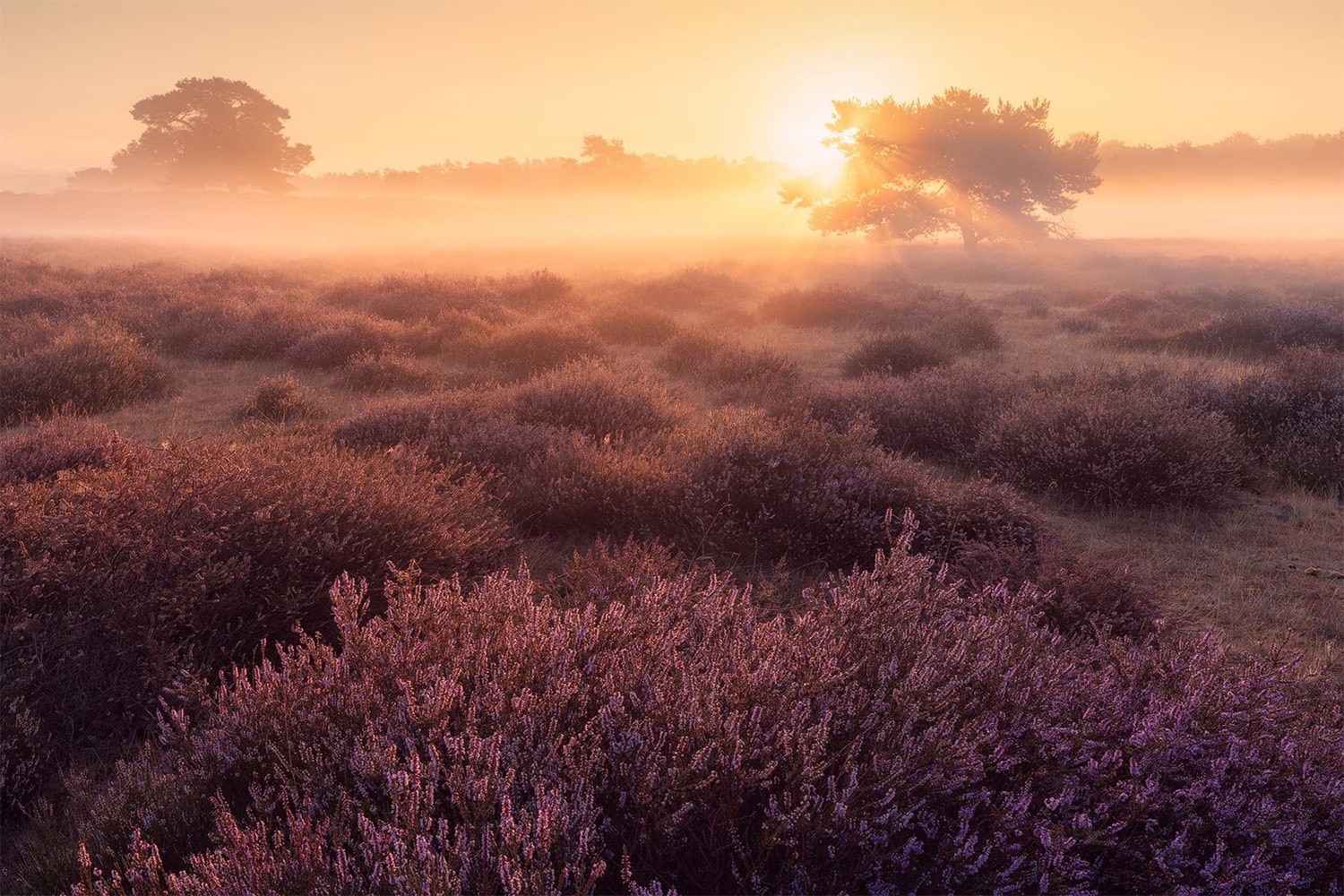
31 interesting facts about Heathlands
- 👁️ 293
Heathlands are unique ecosystems characterized by their open, low-growing woody vegetation, predominantly found in temperate regions across Europe, North America, and Australia. These landscapes are shaped by poor soil fertility, often acidic and sandy, and have been maintained historically through grazing, cutting, and low-intensity burning. Heathlands are biodiversity hotspots, supporting a wide range of plant and animal species, many of which are specially adapted to the harsh conditions of these environments. Despite their ecological importance, heathlands face threats from agricultural expansion, urban development, and the cessation of traditional management practices, making conservation efforts crucial. Let’s explore some fascinating facts about heathlands and their significance.
- Heathlands are dominated by plants such as heather (Calluna vulgaris), gorse (Ulex europaeus), and various species of mosses and grasses.
- These ecosystems are primarily found in regions with a maritime climate, featuring mild, wet winters and cool, damp summers.
- Historically, heathlands were considered wastelands due to their poor soils, which are unsuitable for conventional agriculture.
- Heathlands offer critical habitats for ground-nesting birds, including the nightjar (Caprimulgus europaeus) and the European stonechat (Saxicola rubicola).
- The management practice of burning heather, known as swaling or muirburn, encourages new growth and helps maintain the health of the heath.
- Heathlands are significant carbon sinks, storing carbon in their soils and vegetation, which helps mitigate climate change.
- The New Forest, located in southern England, is one of the most famous heathland areas in the world, renowned for its extensive tracts of heath.
- Many heathland species have adaptations to survive fires, including thick bark or seeds that germinate best after exposure to heat.
- Heathlands are critical for pollinators, providing nectar and pollen from heather flowers, which bloom from late summer to autumn.
- In Australia, heathlands are known as “kwongan” in some indigenous languages and cover vast areas in the southwest of the country.
- Heathland soils are typically acidic, which limits the availability of nutrients and influences the types of plants that can thrive.
- The European adder (Vipera berus), a venomous snake, is often associated with heathlands, where it finds food and basking spots.
- Heathlands have been used by humans for centuries for grazing livestock, cutting turf for fuel, and harvesting heather for thatch and bedding.
- The purple moor grass and rush pastures, often found adjacent to heathlands, are important for rare insects and bird species.
- In the Netherlands, heathlands are called “heide” and have been greatly reduced in size due to agricultural intensification.
- Some heathland areas are designated as Special Areas of Conservation (SACs) under the EU Habitats Directive to protect their unique biodiversity.
- The silver-studded blue butterfly (Plebejus argus) is a species closely associated with heathlands and relies on the habitat for its survival.
- Heathlands can transition into woodland if not actively managed, due to the natural succession of trees and shrubs.
- Bog heathlands, characterized by wetter soils, support unique species such as the carnivorous sundew plants (Drosera species).
- The loss of traditional land management practices, like grazing and mowing, has led to the decline of heathlands in some areas.
- Heathlands are popular among hikers and nature enthusiasts for their scenic beauty and the opportunity to observe rare wildlife.
- The sand lizard (Lacerta agilis), a species of conservation concern, finds refuge in heathlands, where it lays its eggs in warm, sandy soils.
- Peat extraction, for use as fuel and horticultural substrate, has historically threatened peaty heathland ecosystems.
- Heathlands were often scenes of historical battles and conflicts, their open landscapes providing no cover for advancing armies.
- Restoration efforts for degraded heathlands include re-introducing grazing, removing invasive species, and controlled burning.
- The Dartford warbler (Sylvia undata) is a bird species that depends on dense heather for nesting and is sensitive to cold winters.
- Heathlands play a role in folklore and mythology, often depicted as enchanted or bewitched places in literature and art.
- Heather honey, made from the nectar of heather flowers, is a specialty product from heathland areas, valued for its strong flavor.
- Insectivorous birds, such as the European nightjar, are drawn to heathlands for the abundance of moths and other insects.
- Conservation grazing, using native breeds like the Exmoor pony, is an effective method for maintaining open heathland landscapes.
- Climate change poses a new threat to heathlands, potentially altering their distribution and the species they support.
Heathlands are ecologically important landscapes that offer a window into the natural and cultural history of the regions they inhabit. Their conservation is crucial for preserving biodiversity, traditional land uses, and the myriad of ecosystem services they provide. Through sustainable management and restoration efforts, we can ensure that these unique habitats continue to thrive for future generations to enjoy and learn from. The resilience and beauty of heathlands serve as a reminder of the importance of protecting our planet’s natural treasures.
Heathlands are unique ecosystems characterized by their open, low-growing woody vegetation, predominantly found in temperate regions across Europe, North America, and Australia. These landscapes are shaped by poor soil fertility, often acidic and sandy, and have been maintained historically through grazing, cutting, and low-intensity burning. Heathlands are biodiversity hotspots, supporting…